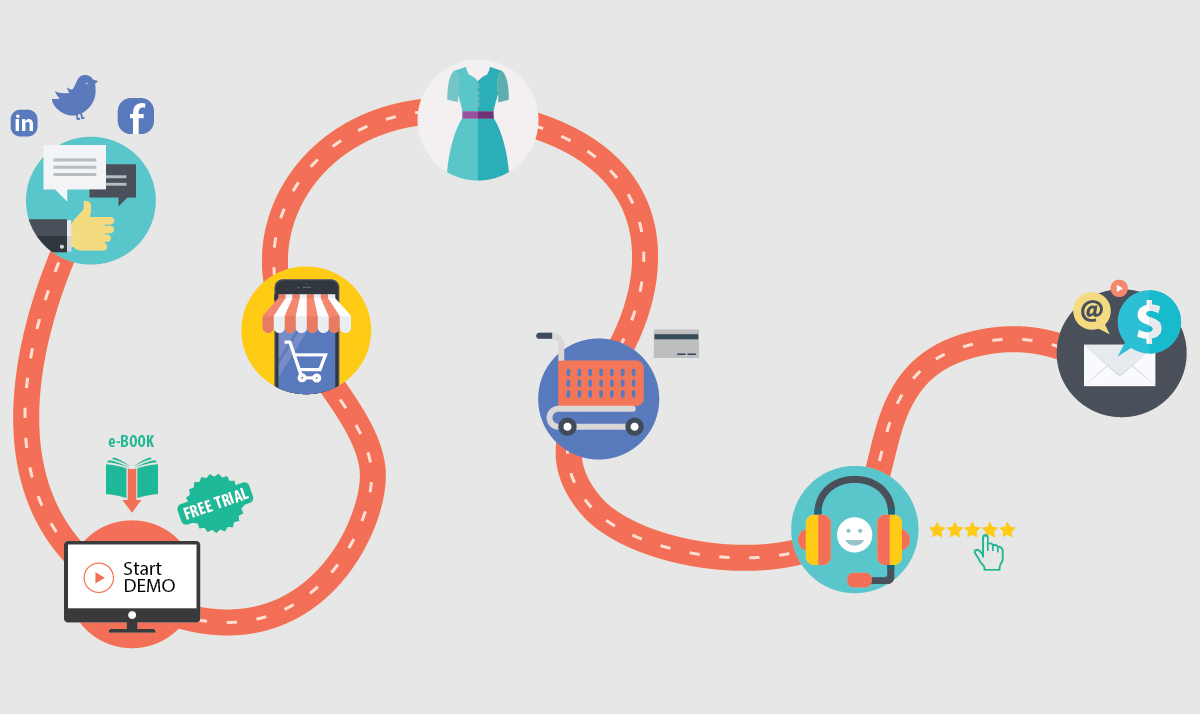Introduction
Every sale on your Shopify store is the result of multiple interactions—ads, emails, social posts, and on‑site behaviors—that lead a visitor from awareness to purchase (and beyond). Customer journey mapping is the process of visually charting these touchpoints so you can identify drop‑off points, optimize marketing efforts, and tie your attribution models directly to real user behavior. In this guide, we’ll walk you through why journey mapping is crucial for Shopify merchants, outline the key stages and data sources you need, and share a practical, step‑by‑step process to build your own map. By the end, you’ll have the insights and tools to turn scattered data into a cohesive narrative that drives higher ROAS and better customer experiences.
1. What Is Customer Journey Mapping?
Customer journey mapping is a visual framework that tracks every interaction a shopper has with your brand—from the very first touch (e.g., seeing an ad) to post‑purchase engagement (e.g., email follow‑up). Rather than viewing channels in isolation, journey maps help you understand the end‑to‑end experience and how each touchpoint influences conversion.
2. Why Journey Mapping Matters for Shopify Stores
-
Holistic Attribution: Moves you beyond last‑click data by revealing the true sequence of events leading to a sale.
-
Gap Identification: Exposes friction points—like abandoned checkouts or unclicked email campaigns—so you can intervene strategically.
-
Personalization Opportunities: Highlights where to tailor messages, offers, or retargeting based on user behavior at each stage.
3. Key Touchpoints in a Shopify Customer Journey
-
Awareness: Paid ads, social media posts, influencer mentions
-
Consideration: Blog content, email newsletters, product page views
-
Purchase: Cart adds, checkout starts, payment confirmations
-
Retention: Order follow‑ups, loyalty programs, review requests
-
Advocacy: Referrals, UGC shares, repeat purchases
4. Tools & Data Sources for Mapping
-
Google Analytics 4: Session paths, events, and conversion funnels
-
Shopify Admin Reports: Traffic sources, sales channels, customer tags
-
Attribuly: First‑party + server‑side event consolidation for multi‑touch attribution
-
Session Replay & Heatmaps: Tools like Hotjar or FullStory to see exactly how users navigate
5. Step‑by‑Step: Building Your Shopify Journey Map
-
Define Personas & Goals: Segment your customers by demographics, spend level, and lifecycle stage.
-
List All Touchpoints: Using the “Key Touchpoints” above, note where each persona interacts with your brand.
-
Gather & Tag Data: Ensure every link, email, and ad uses UTM parameters; capture events server‑side for reliability.
-
Visualize the Map: Use tools like Lucidchart or a simple whiteboard to draw each stage, annotating with metrics (e.g., CTR, bounce rate).
-
Validate with Real Sessions: Cross‑check your map against session replays to confirm the flow matches actual user behavior.
-
Identify Drop‑Offs & Opportunities: Highlight stages with high abandonment or pages needing better CTAs.
6. Using Your Journey Map to Improve Attribution & Marketing
-
Optimize Campaigns: Redirect budget to high‑impact touchpoints and refine underperforming ads.
-
A/B Test Messaging: Test headline, image, or offer changes at stages with low engagement.
-
Refine Attribution Models: Incorporate multi‑touch insights into your GA4 or Attribuly setup for more accurate ROAS calculations.
7. Best Practices & Tips
-
Keep It Dynamic: Update your map monthly as you launch new campaigns or see seasonal shifts.
-
Collaborate Across Teams: Involve marketing, customer support, and product teams to capture all interaction points.
-
Prioritize Privacy: Use first‑party data and server‑side tracking to maintain accuracy without relying on third‑party cookies.
-
Document Learnings: Store your journey map and insights in a central location (e.g., Notion, Confluence) for easy reference.
Conclusion
Customer journey mapping transforms scattered analytics into a clear narrative of how users discover, evaluate, and buy from your Shopify store. By systematically charting touchpoints, leveraging first‑party and server‑side data, and iterating on your insights, you’ll not only improve your attribution accuracy but also deliver seamless experiences that boost conversions and customer loyalty. Start mapping today—your data will thank you.
